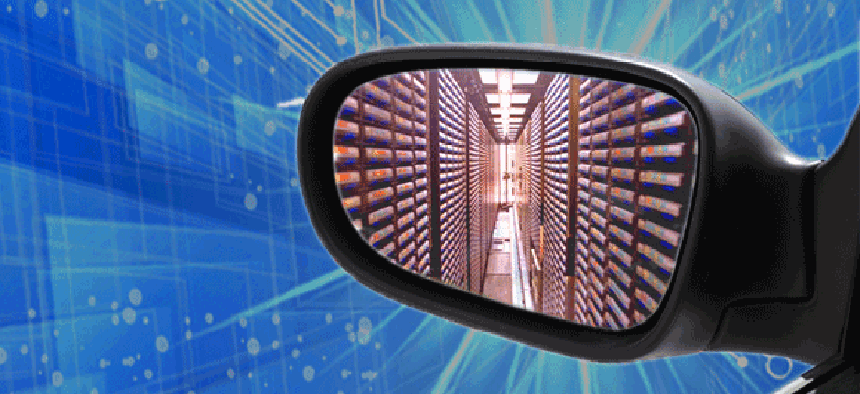Rise of disk storage leaves tape with specialized backup role

As the price and performance of disk-based storage improves, magnetic tape-based systems have become a specialized tool for big storage backup requirements.
Two years ago, the National Center for Supercomputing Applications announced it was building a storage infrastructure for its Blue Waters petaflop-scale supercomputer that would include 380 petabytes of magnetic tape storage and 25 petabytes of online disk capacity.
The Center needed the big tape repository to back up the terabyte per second data flows generated by its ambitious mission to understand “how the cosmos evolved after the Big Bang.” Tape, with its low cost and power requirements, was the best technology choice for the job.
For agencies with mid-range requirements, however, tape has steadily been losing ground to disk-based systems in the cost for performance equation. And today, tools are available to simplify the transfer of data from tape to disk-drive based systems.
Tape drives have been part of computing in one form or another since 1951, with the Remington Rand drive, which offered a tiny 224 kilobytes of storage data for UNIVAC. Today tape drives are almost exclusively used for network backup. Drives like the IBM 3592 can provide up to 4 terabytes of storage capacity.
Tape drives have many advantages. In general, modern tape drives are fairly quick when working in a backup role, where data is continuously streamed onto them, as is the case in the NCSA project. They are also reliable if not overused and inexpensive in a cost per megabyte calculation. For the most part, tape drives are also interchangeable, meaning data recorded with one type of drive can normally be read on another device, even if the devices are created by different manufacturers.
Even so, tape drives have limited uses, even for backup. They are designed to be linear, meaning that while they work for recording continuous streams of data, it takes a significant amount of time to retrieve data from them. This is especially true when compared to disk-based storage where any information from any part of a disk can be accessed within seconds regardless of drive size. That difference could be important for certain applications like IP video surveillance where retrieving data for investigations could be time sensitive.
Another advantage to disk-based backup is its use of compression storage techniques such as data deduplication, which can result in 100 to 1 or more reductions in storage size depending on the application. Email backup, for example, gets particularly high compression rates when using deduplication because the header information on many emails is the same. Deduplication won't work with a linear tape system. But that might not matter to agencies that find it simpler and less expensive to simply buy more tape.
Still, as the price of disk-based storage comes down and compression technologies improve, many agencies may be considering moving from tape to disk-based backup. And when that decision is made, tools are now available to manage the transition.
ExaGrid, for example, is a backup supplier specializing in tape-to-disk migration. It first installs an appliance, which it says is best for customers with at least 1 terabyte of primary data to be backed up into a single grid system.
The appliance is not cheap, ranging in price from $10,000 to hundreds of thousands of dollars depending on the amount of data to be moved. The ExaGrid appliance can interface with most backup systems, including Symantec NetBackup, Symantec Backup Exec, CommVault Simpana, IBM TSM, EMC Networker, CA ArcServe, Veeam and others. ExaGrid can also take in data from direct SQL dumps and direct Oracle RMAN dumps.
Once in place, data from the tape drive can begin transferring to the disk-based system and is immediately available as it moves into the new system. According to ExaGrid Systems CEO Bill Andrews, "ExaGrid is the only disk-based backup appliance that has a landing zone where the backups are first landed and then deduplicated.”
These days, the cost of disk-based backup is not nearly as expensive as it once was. It's coming in line with the cost per megabyte of tape backup and offers many advantages, such as fast retrieval and smaller footprints through deduplication. With increasingly simple transfers and flat-lining disk costs, the days of tape may actually be coming to an end.
NEXT STORY: 5 ways agencies can use Hadoop





